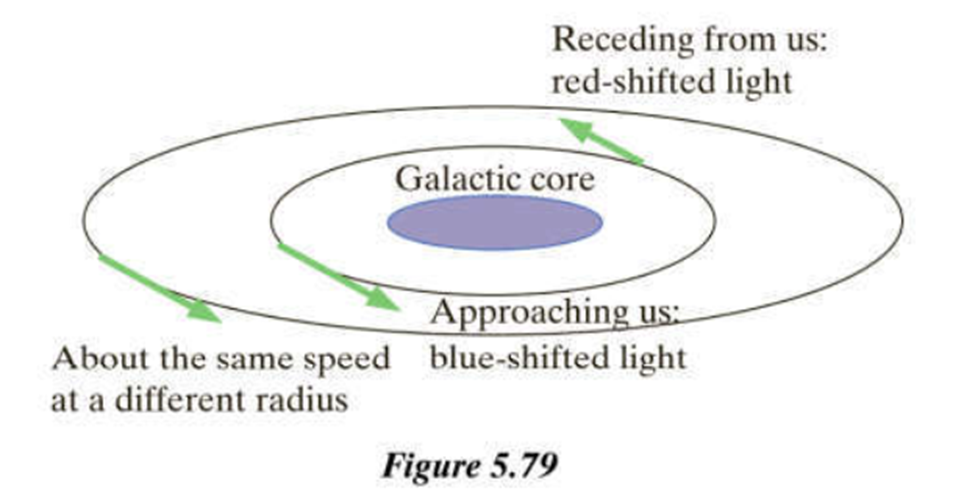In the 1970 sthe astronomer Vera Rubin made observations of distant galaxies that she interpreted as indicating that perhaps 90%of the mass in a galaxy is invisible to us ("dark matter"). She measured the speed with which stars orbit the center of a galaxy, as a function of the distance of the stars from the center. The orbital speed was determined by measuring the Doppler shift of the light from the stars, an effect that makes light shift toward the red end of the spectrum ("red shift") if the star has a velocity component away from us, and makes light shift toward the blue end of the spectrum if the star has a velocity component toward us.

She found that for stars farther out from the center of the galaxy, the orbital speed of the star hardly changes with distance from the center of the galaxy, as is indicated in Figure 5.79. The visible components of the galaxy (stars, and illuminated clouds of dust) are most dense at the center of the galaxy and thin out rapidly as you move away from the center, so most of the visible mass is near the center. (a) Predict the speed v ofa star going around the center of a galaxy in a circular orbit, as a function of the star's distance r from the center of the galaxy,assumingthat almost all of the galaxy's mass M is concentrated at the center.
(b) Construct a logical argument as to why Rubin concluded that much of the mass of a galaxy is not visible to us. Reason from principles discussed in this chapter, and your analysis of part (a). Explain your reasoning. You need to address the following issues: (i) Rubin's observations are not consistent with your prediction in (a). (ii) Most of the visible matter is in the center of the galaxy. (iii) Your prediction in (a) assumed that most of the mass is at the center.
This issue has not yet been resolved, and is still a current topic of astrophysics research. Here is a discussion by Rubin of her work: ''Dark Matter in Spiral Galaxies '' by Vera C. Rubin, Scientific American, June 1983 (96-108). You can find several graphs of the rotation curves for spiral galaxies on page 101 of this article.



